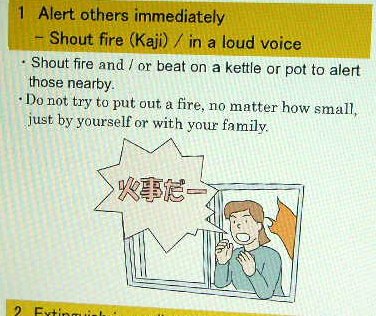So, how was Japan?
I’ll be getting onto various Japanese topics/stories from my trip further down the line in this blog, but to answer the general question of “how was the trip?” The trip was fine. It didn’t go quite the way I had expected (more about this later) but it went OK. Yeah, three typhoons was annoying but the real crappy thing was the numerous but relatively small (in Tokyo at least) earthquakes. However, after this one,

and then a couple days of large aftershocks from this earthquake, I packed it in and called the trip short by a few weeks. By this stage, I wasn’t having any fun (amazing how constant earth movement in an area due for a massive earthquake and thinking you are going to die constantly can suck all the joie de vivre out of you) nor was I getting much done. I made my mind up and I was out of the country 28 hours later. But I did manage to avoid this one.

These images are from the Japan Weather Association website and use the Japanese earthquake scale, which is different than the Richter scale. This scale is based on how it feels to people vs. the Richter that estimates the intensity at the point of the earthquake. So using the Japanese scale, earthquakes can be referred to as a 6+ in one place and 4 somewhere else. Here is a summary of the scale.
7: In most buildings, wall tiles and windowpanes are damaged and fall. In some cases, reinforced concrete-block walls collapse.
6+: In many buildings, wall tiles and windowpanes are damaged and fall. Most unreinforced concrete-block walls collapse
6-: In some buildings, wall tiles and windowpanes are damaged and fall.
5+: In many cases, unreinforced concrete-block walls collapse and tombstones overturn. Many automobiles stop due to difficulty in driving. Occasionally, poorly installed vending machines fall.
5-: Most people try to escape from danger, some finding it difficult to move.
4: Many people are frightened. Some people try to escape from danger. Most sleeping people awake.
3: Felt by most people in the building. Some people are frightened.
2: Felt by many people in the building. Some sleeping people awake.
1: Felt by only some people in the building.
0: Imperceptible to people.
The Tokyo Metropolitan Government’s website has an 88 page PDF files for English speakers that goes over various earthquake issues. It is an interesting read, if only for the yes/no flowcharts(fire/no fire, house intact/house destroyed) and the ominous sounding “disaster message exchange”-a government telephone switchboard that allows people to leave messages for one another during a disaster. And it talks a lot about not listening to rumors but only getting information from the government source. That’s not too surprising considering that J folks rioted after the last big one in 1923 and massacred thousands of Koreans living in the Tokyo area. During my stay into Tokyo, I mentally programmed myself to be continuously aware of my current location in relationship to the US embassy, so assuming I wasn't immediately crushed to death or killed in a post earthquake firestorm, I would know which direction to go in order to put some US marines between me and the seriously pissed off Tokyo populace. But the best thing in this guide is the happy carp mascot they have on the “emergency road closure” signs. Just because a disaster happened and tens of thousands of people are dead doesn’t mean you have to dump kawaii mascots.

http://www.seikatubunka.metro.tokyo.jp/index3files/survivalmanual.pdf

Latest Earthquake reports from Japan Weather Association. Using the menu box, you can see the time, location and intensity of the last 99 seismic events in Japan.
http://www.tenki.jp/qua/index.html

and then a couple days of large aftershocks from this earthquake, I packed it in and called the trip short by a few weeks. By this stage, I wasn’t having any fun (amazing how constant earth movement in an area due for a massive earthquake and thinking you are going to die constantly can suck all the joie de vivre out of you) nor was I getting much done. I made my mind up and I was out of the country 28 hours later. But I did manage to avoid this one.

These images are from the Japan Weather Association website and use the Japanese earthquake scale, which is different than the Richter scale. This scale is based on how it feels to people vs. the Richter that estimates the intensity at the point of the earthquake. So using the Japanese scale, earthquakes can be referred to as a 6+ in one place and 4 somewhere else. Here is a summary of the scale.
7: In most buildings, wall tiles and windowpanes are damaged and fall. In some cases, reinforced concrete-block walls collapse.
6+: In many buildings, wall tiles and windowpanes are damaged and fall. Most unreinforced concrete-block walls collapse
6-: In some buildings, wall tiles and windowpanes are damaged and fall.
5+: In many cases, unreinforced concrete-block walls collapse and tombstones overturn. Many automobiles stop due to difficulty in driving. Occasionally, poorly installed vending machines fall.
5-: Most people try to escape from danger, some finding it difficult to move.
4: Many people are frightened. Some people try to escape from danger. Most sleeping people awake.
3: Felt by most people in the building. Some people are frightened.
2: Felt by many people in the building. Some sleeping people awake.
1: Felt by only some people in the building.
0: Imperceptible to people.
The Tokyo Metropolitan Government’s website has an 88 page PDF files for English speakers that goes over various earthquake issues. It is an interesting read, if only for the yes/no flowcharts(fire/no fire, house intact/house destroyed) and the ominous sounding “disaster message exchange”-a government telephone switchboard that allows people to leave messages for one another during a disaster. And it talks a lot about not listening to rumors but only getting information from the government source. That’s not too surprising considering that J folks rioted after the last big one in 1923 and massacred thousands of Koreans living in the Tokyo area. During my stay into Tokyo, I mentally programmed myself to be continuously aware of my current location in relationship to the US embassy, so assuming I wasn't immediately crushed to death or killed in a post earthquake firestorm, I would know which direction to go in order to put some US marines between me and the seriously pissed off Tokyo populace. But the best thing in this guide is the happy carp mascot they have on the “emergency road closure” signs. Just because a disaster happened and tens of thousands of people are dead doesn’t mean you have to dump kawaii mascots.

http://www.seikatubunka.metro.tokyo.jp/index3files/survivalmanual.pdf

Latest Earthquake reports from Japan Weather Association. Using the menu box, you can see the time, location and intensity of the last 99 seismic events in Japan.
http://www.tenki.jp/qua/index.html


<< Home